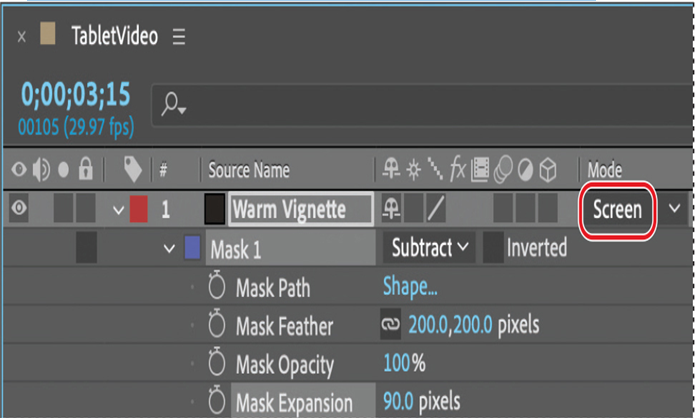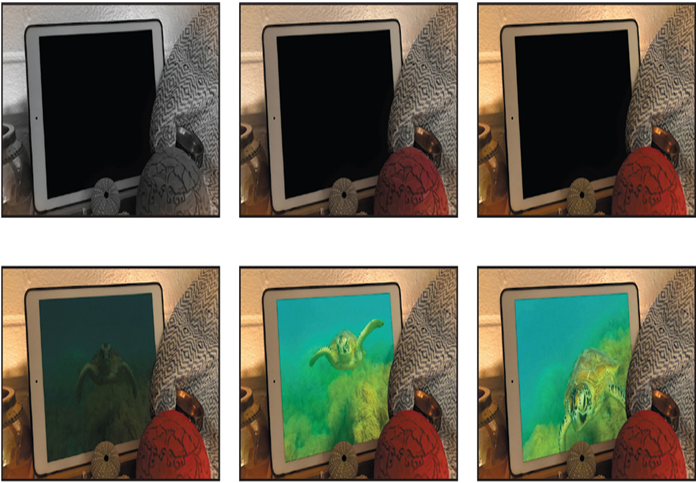The Rectangle tool, as the name suggests, creates a rectangle or square. The Ellipse tool creates an ellipse or circle. You create mask shapes with these tools by dragging them in the Composition or Layer panel.
If you want to draw a perfect square or circle that fills the screen, press the Shift key as you double-click the Rectangle or Ellipse tool. To draw a perfect square or circle of a different size, press the Shift key as you drag with the Rectangle tool or the Ellipse tool. To create your mask from the center, press Ctrl (Windows) or Command (macOS) after you start to drag. Press Ctrl+Shift or Command+Shift after you start to drag to create a perfect square or circle mask from a center anchor point.
Be careful! If you use these tools without a layer selected, you’ll draw a shape, not a mask.
- Increase the Mask Feather amount to 200, 200 pixels.
Your composition should now resemble the following figure.

Even with this large feather amount, the vignette is intense and constricting. You can make the vignette warmer and less overwhelming by adjusting the Mask Expansion property. The Mask Expansion property represents, in pixels, how far from the original mask edge you are expanding or contracting the adjusted edge.
- Increase Mask Expansion to 90 pixels.
Finally, you can use a blending mode to make the effect more subtle. - Choose Screen from the Mode pop-up menu for the Warm Vignette layer.

- Hide the properties for the Warm Vignette layer, and then choose File > Save.
- Deselect all layers. Then, press the spacebar to preview the movie. Press the spacebar again when you’re done.

Review questions
1 What is a mask?
2 What is a direction handle used for?
3 What is the difference between an open mask and a closed mask?
4 How is the Mask Feather tool useful?
Review answers
1 In After Effects, a mask is a path, or outline, that is used to modify layer effects and properties. The most common use of masks is to modify a layer’s alpha channel. A mask consists of segments and vertices.
2 A direction handle is used to control the shape and angle of a Bezier curve.
3 An open mask can be used to control effects or the placement of text; it does not define a region of transparency. A closed mask defines a region that will affect the alpha channel of a layer.
4 The Mask Feather tool lets you vary the width of feathering at different points on a mask. With the Mask Feather tool, click to add a Feather point, and then drag it.
